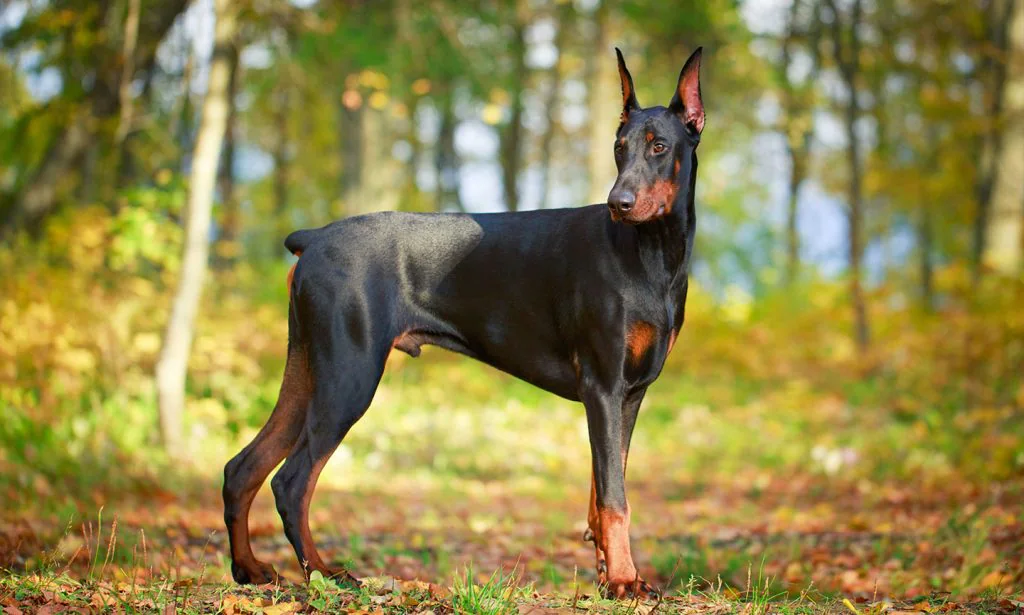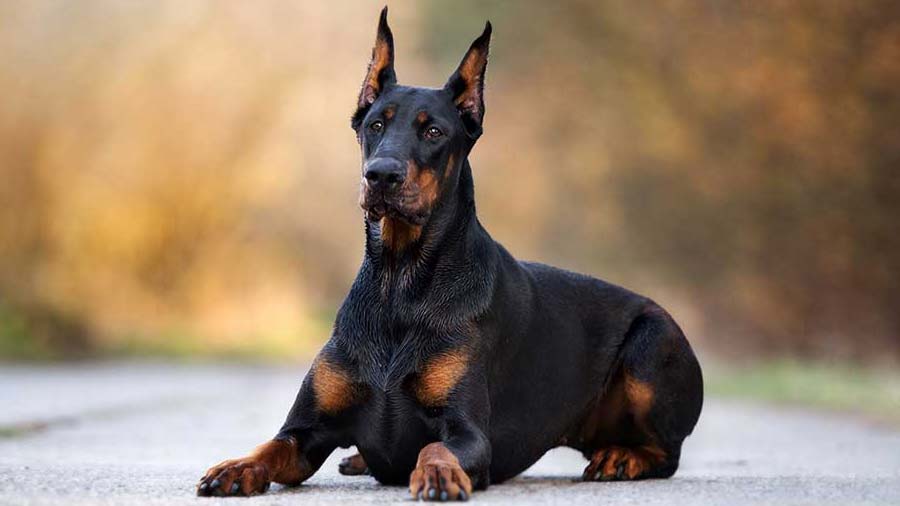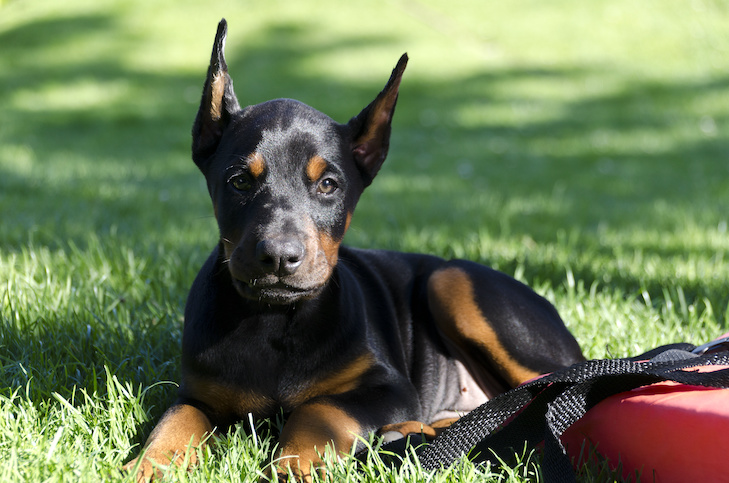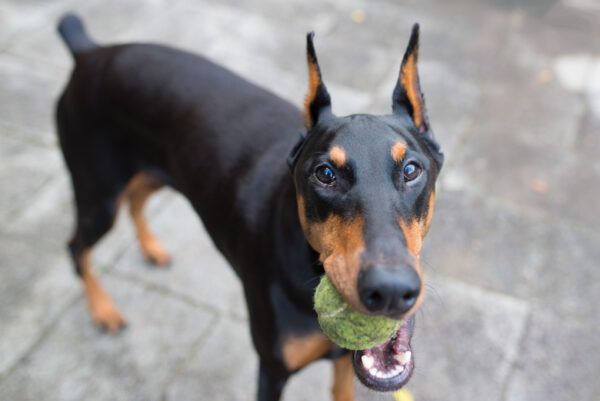Introduction
The Doberman Pinscher breed has a rich history that dates back to the late 19th century. Created by a German tax collector named Louis Dobermann, these dogs were originally bred for their loyalty and guarding abilities. Over time, the breed has evolved to become not only a steadfast protector but also a beloved family companion.
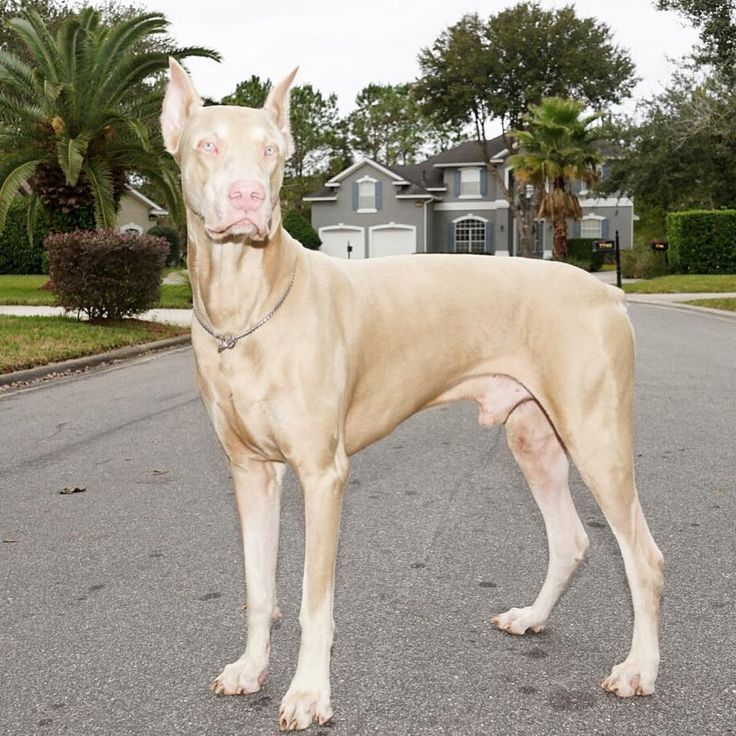
White Doberman Pinschers, though not recognized by some kennel clubs, possess unique characteristics that make them stand out. With their strikingly beautiful coat color and distinctive markings, they capture the attention of dog enthusiasts around the world. However, it’s essential to delve deeper into understanding their behavior to ensure their well-being and happiness.
Genetics and Breeding
White Doberman Pinschers owe their unique coat color to a specific genetic mutation. Unlike their traditional black, red, or blue counterparts, these white dogs lack the typical pigmentation found in their fur. Although their appearance may be awe-inspiring, it’s crucial to recognize the health concerns associated with the “white” coat color.
Responsible breeding practices play a significant role in maintaining the overall health and vitality of white Doberman Pinschers. Ethical breeders prioritize selecting parent dogs with good temperaments and sound genetic backgrounds. Through thorough health testing, they ensure that the offspring are less prone to hereditary conditions.
Physical Characteristics
White Doberman Pinschers possess the same robust and athletic body structure as their colored counterparts. They typically stand at a height of 24 to 28 inches (61-71 cm) at the shoulder and weigh between 60 to 100 pounds (27-45 kg). Their well-proportioned bodies and sleek muscles give them an elegant appearance.
While most Doberman Pinschers exhibit a solid coat color, white Dobermans vary in their coat patterns. Some white Dobermans may have what is known as “parti” coats, which consist of patches of white and another color. These variations add to their individuality, making each Doberman Pinscher unique in its own right.
The eye-catching feature of white Doberman lies within their eye and nose color. Unlike their colored counterparts, these magnificent dogs often showcase striking blue eyes and a pink nose. Their captivating appearance is a result of reduced pigmentation in these areas.
Personality Traits and Temperament
Doberman Pinschers, including their white counterparts, possess a combination of desirable traits that make them remarkable companions. Known for their loyalty, intelligence, and protective instincts, Dobermans are often considered a favorite breed among dog enthusiasts.
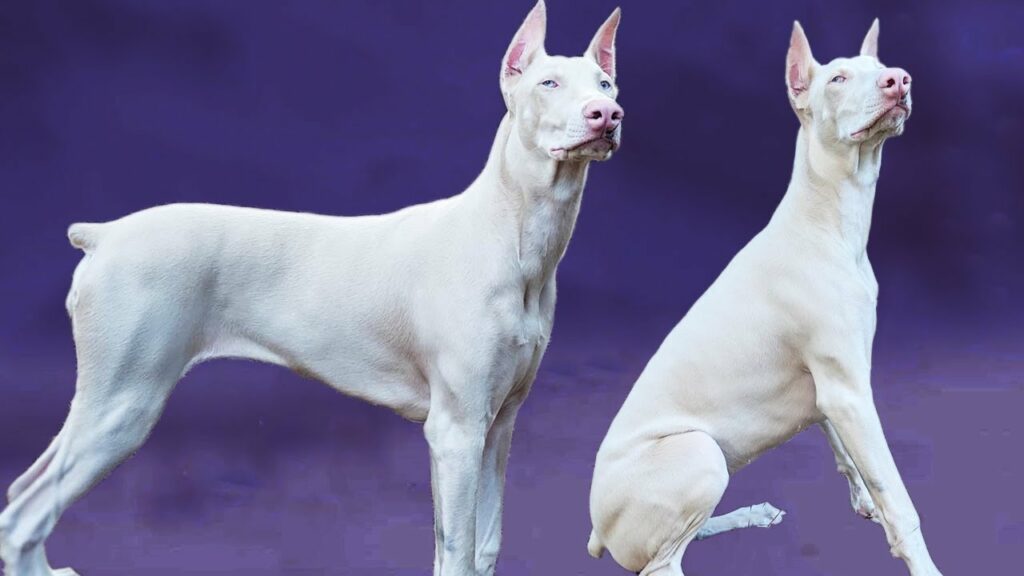
White Doberman share many common personality traits with their colored counterparts. They are typically devoted to their families, forming strong bonds and displaying unwavering loyalty. Their intelligence and eagerness to please make them highly trainable, allowing owners to shape their behavior effectively.
However, it’s crucial to note that every dog, regardless of color, possesses its own unique personality. White Doberman Pinschers may exhibit subtle variations in temperament, with some individuals displaying more reserved or independent tendencies. Proper training and socialization from an early age can help balance and refine their temperament.
Health and Exercise Needs
While white Doberman Pinschers are generally healthy dogs, certain health issues are more prevalent within the breed. It’s essential for owners to be aware of these potential concerns to provide the best possible care for their furry companions.
- Deafness and hearing-related concerns:
- White Doberman Pinschers are more susceptible to congenital deafness compared to their colored counterparts. The absence of pigmentation in their ears can result in partial or complete hearing loss.
- Regular hearing tests can help identify any hearing impairment in white Dobermans, enabling proactive measures to ensure their safety and well-being.
- Skin sensitivity and allergies:
- White Doberman Pinschers may have a higher likelihood of developing skin sensitivities and allergies due to their lack of pigmentation.
- Regular skin checks, proper grooming routines, and a balanced diet can help minimize these issues and promote healthy skin.
To maintain optimal health, white Doberman Pinschers require a well-balanced and nutritious diet. Consulting with a veterinarian to determine the best dietary options and considering any specific needs related to potential allergies or sensitivities is crucial.
Additionally, regular exercise is vital for the overall well-being of white Doberman Pinschers. Engaging in daily physical activities, such as long walks, jogging, or playing fetch, helps release their abundant energy and keeps them mentally stimulated.
Grooming and Care
Proper grooming practices are essential to keep your white Doberman Pinscher looking and feeling their best. Here are some key aspects to consider:
A. Coat care for white Doberman Pinschers:
- Routine brushing helps to keep their coat clean and free from mats or tangles.
- Using a soft brush or grooming glove is recommended to avoid irritating their sensitive skin.
B. Bathing and proper hygiene practices:
- White Doberman Pinschers should be bathed regularly using a mild and hypoallergenic dog shampoo.
- Care should be taken to ensure their skin is properly dried after a bath to prevent any moisture-related skin irritations.
C. Nail trimming, dental care, and other grooming needs:
- Regular nail trims are necessary to prevent discomfort or injury.
- Dental care, such as regular brushing or providing dental chews, helps maintain good oral hygiene.
- Routine checking of ears, eyes, and teeth is essential to catch any potential issues early on.
Understanding Behaviors and Communication
Communication plays a vital role in understanding your white Doberman Pinscher’s needs, feelings, and overall well-being. By being attentive to their body language, barking tendencies, and signs of stress or anxiety, you can ensure that they feel safe and comfortable.

A. Canine body language and its interpretation:
- White Doberman Pinschers, like all dogs, use body language to convey their emotions and intentions.
- Understanding common cues such as tail position, ear position, and overall posture can help decipher what your furry companion is trying to communicate.
B. Barking tendencies and communication methods:
- White Doberman Pinschers have a natural inclination to be vocal and may engage in barking to communicate their needs or alert their owners.
- Recognizing the different types of barks, such as alarm barks or boredom barks, can help address underlying issues or provide appropriate mental stimulation.
C. Recognizing signs of stress and anxiety in white Doberman Pinschers:
- Like any dog, white Doberman Pinschers can experience stress or anxiety in certain situations.
- Identifying signs of stress, such as excessive panting, pacing, or avoidance behaviors, allows for timely intervention and support.
Training and Socialization
Training and socialization are crucial components of raising a well-behaved and well-adjusted white Doberman Pinscher. Consistency, positive reinforcement, and early exposure to various environments can help shape their behavior and build confidence.
A. Basic obedience training for white Doberman Pinschers:
- Teaching basic commands like sit, stay, and recall is essential for establishing boundaries and ensuring safety.
- Employing positive reinforcement techniques, such as treats and praise, helps motivate and reinforce desirable behaviors.
B. Socialization techniques for a well-rounded companion:
- White Doberman Pinschers, like all dogs, benefit from early socialization to different people, animals, and environments.
- Gradually exposing them to a variety of situations and providing positive experiences can help prevent fear or aggression towards unfamiliar stimuli.
C. Challenges and solutions specific to this breed during training:
- Some white Doberman Pinschers may display stubborn tendencies, requiring additional patience and consistent training methods.
- Seeking the guidance of a professional dog trainer or behaviorist can provide valuable insights and help overcome any training challenges.
Exercise and Mental Stimulation
White Doberman Pinschers have a naturally active and energetic disposition, making regular exercise vital for their overall well-being. Here are some guidelines to ensure they receive both physical and mental stimulation:
A. Suitable exercise routines for white Doberman Pinschers:
- Engage in activities that match their energy levels, such as long walks, jogging, or hiking.
- Incorporate interactive play sessions, such as fetch or agility training, to challenge them mentally and physically.
B. Mental stimulation activities to prevent boredom:
- Puzzle toys, food-dispensing toys, and interactive games provide mental enrichment and prevent boredom.
- Teaching them new tricks or participating in obedience classes can further stimulate their intellect.
C. Fun sports and games to engage your pet’s energy:
- White Doberman Pinschers excel in various dog sports, such as obedience trials, agility, or tracking.
- Participating in these activities not only provides an outlet for their energy but also strengthens the bond between owner and dog.
Living with a White Doberman Pinscher
To ensure a harmonious living environment, it’s important to consider the specific needs and characteristics of a white Doberman Pinscher. Here are some key points to keep in mind:
A. Ideal living arrangements and suitable environments:
- White Doberman Pinschers thrive in environments that provide ample space for physical activities, such as a securely fenced yard or access to regular exercise areas.
- Avoiding extreme temperatures is crucial, as white dogs are more susceptible to sunburn and heat-related issues.
B. Handling separation anxiety and preventing destructive behaviors:
- White Doberman Pinschers, like many other breeds, may experience separation anxiety when left alone for extended periods.
- Establishing a regular routine, providing mental stimulation toys, and gradually increasing their independence can help alleviate separation anxiety.
C. Incorporating mental and physical enrichment in everyday life:
- White Doberman Pinschers require mental and physical stimulation on a daily basis to prevent boredom and maintain a healthy lifestyle.
- Incorporating activities like daily walks, training sessions, and puzzle toys into their routine can help meet their needs.
Health Maintenance and Veterinarian Care
Proper health maintenance and regular veterinary care are essential for the well-being of your white Doberman Pinscher. Here are some key considerations:
A. Regular vet check-ups and preventative care:
- Scheduling routine veterinary check-ups allows for the early detection of any potential health issues.
- Maintaining up-to-date vaccinations, parasite prevention, and regular health screenings are essential for optimal health.
B. Vaccination schedules and parasite prevention:
- Following a veterinarian-recommended vaccination schedule helps protect white Doberman Pinschers from common diseases.
- Employing preventive measures, such as regular parasite control through flea, tick, and heartworm prevention, is crucial.
C. Emergency situations and first aid measures:
- Familiarizing yourself with basic first aid techniques and keeping a first aid kit on hand can be invaluable in emergency situations.
- Knowing the location of nearby emergency veterinary clinics is essential for immediate medical attention when needed.
Family and Children
White Doberman Pinschers can make excellent companions in households with children. Here are some considerations when introducing a white Doberman Pinscher to your family:
A. White Doberman Pinschers in households with children:
- Early socialization with children can help establish a strong bond between white Doberman Pinschers and their younger family members.
- Supervision during interactions and teaching both children and dogs proper manners is crucial to ensure a safe and harmonious relationship.
B. Introducing your pet to other animals and pets:
- Proper introductions and gradual acclimation are essential when introducing a white Doberman Pinscher to other animals or pets in the household.
- Monitoring interactions and maintaining a harmonious environment can help prevent any potential conflicts.
C. Safety precautions and supervision guidelines:
- Educating children on appropriate behavior around dogs and ensuring they understand their limits when interacting with white Doberman Pinschers is vital.
- Supervision should always be present when children and dogs are together to avoid any accidental harm or misunderstanding.
Traveling and Transportation
Whether traveling by air or car, it’s important to consider your white Doberman Pinscher’s comfort and safety. Here are some tips for a smooth journey:
A. Traveling tips with a white Doberman Pinscher:
- Prior to traveling, ensure that your white Doberman Pinscher is comfortable with the mode of transportation by gradually acclimating them to car or airplane travel.
- Providing familiar items, such as their bed or favorite toy, can help reduce anxiety during the journey.
B. Airplane regulations and requirements:
- Familiarize yourself with airline policies and regulations regarding the transport of dogs, including crate requirements and documentation needed for travel.
- Consult with your veterinarian to ensure your white Doberman Pinscher meets all necessary health and vaccination requirements.
C. Car safety measures for a smooth journey:
- Securing your white Doberman Pinscher in a properly sized and well-ventilated crate or using safety harnesses designed for dogs ensures their safety during car travel.
- Frequent breaks, access to water, and avoiding leaving your dog unattended in a parked vehicle are essential for their well-being.
White Doberman Pinscher in Society and Public Settings
White Doberman Pinschers may face certain stereotypes and public perceptions. As responsible dog owners, it’s important to promote positive breed representation and advocate for responsible dog ownership. Here are some ways to participate in society and public settings:
A. Public perception and stereotypes of white Doberman Pinschers:
- Some people may have misconceptions or prejudices toward white Doberman Pinschers due to their unique coat color.
- Offering educational resources, politely addressing misconceptions, and showcasing your well-behaved dog can help challenge stereotypes.
B. Responsible dog ownership and promoting positive breed representation:
- Nurture a well-mannered and obedient white Doberman Pinscher through proper training, socialization, and responsible ownership.
- Encouraging good behavior in public settings and adhering to local regulations help promote positive breed representation.
C. Participating in dog events, shows, and therapy programs:
- Engaging in dog-related activities, such as obedience trials or agility competitions, showcases the capabilities and wonderful temperament of white Doberman Pinschers.
- Exploring opportunities for therapy work, such as becoming a certified therapy dog team, allows them to positively impact the lives of others.
READ ALSO:
- Greater Swiss Mountain Dog – Characteristics, 6 Comprehensive Behaviour And Health
- Doberman Pinscher Dog – 3 Superb Physical Characteristics And Behaviour
- German Pinscher – 7 Exclusive Physical Characteristics, Behaviour And Health
- Giant Schnauzer Dog – 4 Exclusive Body Characteristics, Behaviour, Caring And Health
Frequently Asked Questions (FAQs)
Are white Doberman Pinschers rare?
Yes, white Doberman Pinschers are considered rare compared to their traditionally colored counterparts. The white coat color is the result of specific genetic factors.
How do I find a reputable breeder for a white Doberman Pinscher?
Locating a reputable breeder who follows ethical breeding practices is crucial. Research reputable breeders, ask for references, and ensure they prioritize the health and well-being of their dogs.
Can white Doberman Pinschers participate in dog sports?
Absolutely! White Doberman Pinschers are highly capable and excel in various dog sports, such as obedience trials, agility competitions, and tracking events.
What is the average lifespan of a white Doberman Pinscher?
Like other Doberman Pinschers, the average lifespan of a white Doberman Pinscher is typically between 10 to 13 years. Regular veterinary care, proper nutrition, and a healthy lifestyle can contribute to their longevity.
Conclusion
In conclusion, understanding your white Doberman Pinscher is key to fostering a strong bond and fulfilling relationship. By comprehending their unique genetic traits, physical characteristics, behavior, and specific care needs, you can provide them with the love, attention, and support they deserve. With proper training, socialization, and care, your white Doberman Pinscher is

